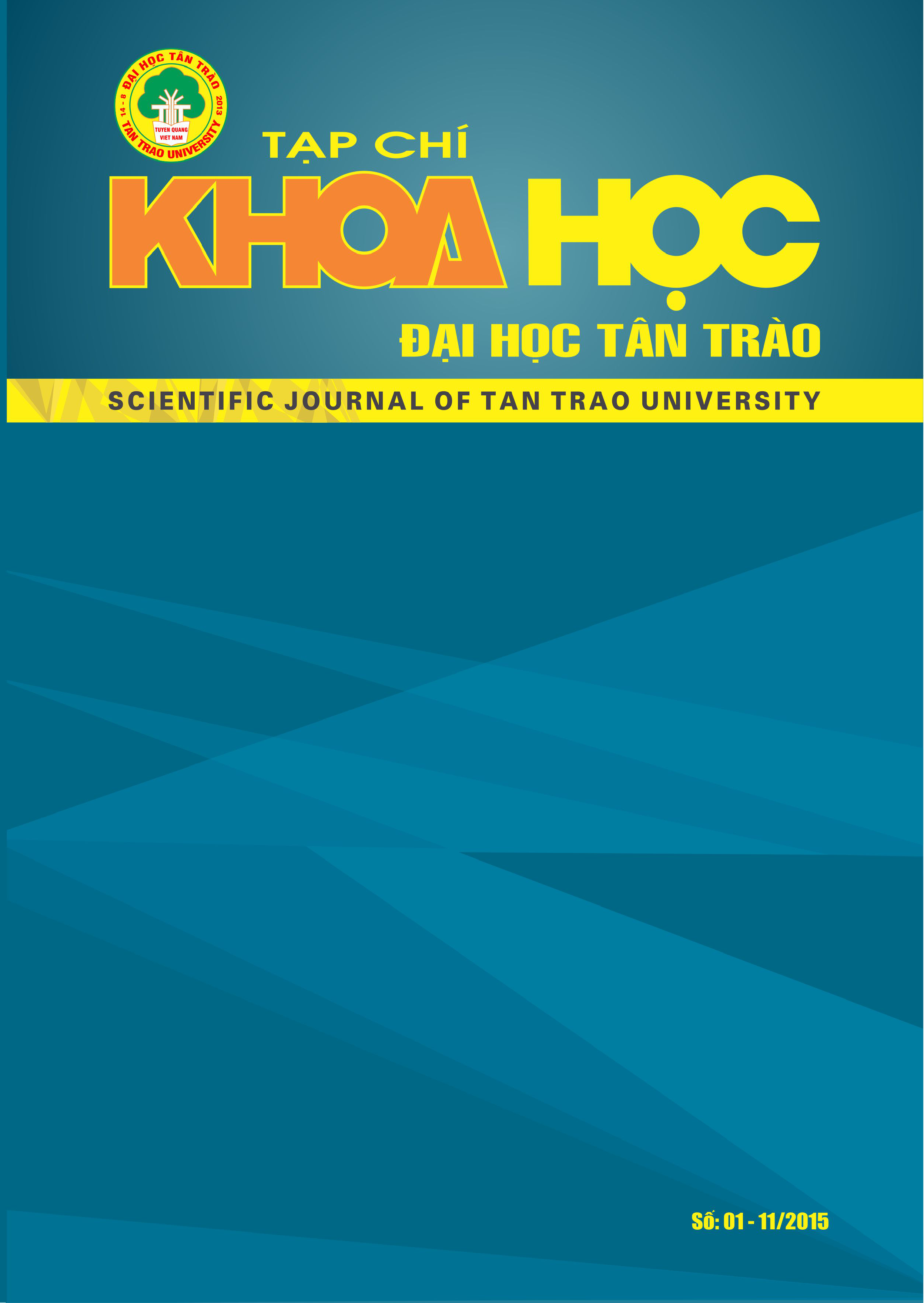Evaluation of diversity of flora species composition and reasons causing vegetation degradation
DOI:
https://doi.org/10.51453/2354-1431/2015/341Keywords:
Secondary forests, vegetation, shrub, grass, Vi Xuyen districtAbstract
In the 3 types of vegetation covers (grass vegetation, shrub vegetation and second forest there are 557 species belonging to 393 genera, 114 families of five branches of higher vascular plants such as Lycopodiophyta, Equisetopsida, Polypodiophyta, Pinophyta and Magnoliophyta. Of which, there are 15 families available over 10 species (accounting for 42.01% of total species), 13 genera available over 4 species (accounting for 12.39% of total species). There are 33 rare plant species in the 2007 Vietnam Red Data Book and 7 species recorded in Decree of Government No. 32. Majority of statistical species are the light-demanding pioneer species growing on land exploited exhaustedly and on the area of forests without trees after large trees cut down. Although there is a rich and diversified flora, the vegetations in Vi Xuyen district is significant degradation in terms of area and quality that the main reasons is due to the activities of exploitation on logging, firewood and non-timber forest products and forest fire, etc.Downloads
References
1. Nguyễn Tiến Bân (chủ biên) và cộng sự (2003, 2005), Danh lục các loài thực vật Việt Nam, Nxb Nông nghiệp, Hà Nội.
2. Bộ Khoa học và Công nghệ, Viện Khoa học và Công nghệ Việt Nam (2007), Sách đỏ Việt Nam (phần Thực vật), Nxb Khoa học Tự nhiên và Công nghệ, Hà Nội.
3. Bộ Nông nghiệp và Phát triển Nông thôn (2000), Tên cây rừng Việt Nam, Nxb Nông nghiệp, Hà Nội.
4. Chính phủ nước Cộng hoà xã hội chủ nghĩa Việt Nam (2006), Nghị định 32/2006/ NĐ-CP về quản lý thực vật rừng, động vật rừng nguy cấp, quý, hiếm, Hà Nội.
5. Phạm Hoàng Hộ (1991-1993), Cây cỏ Việt Nam, tập I - III, Nxb Motreal, Canada.
Downloads
Published
How to Cite
Issue
Section
License

This work is licensed under a Creative Commons Attribution-ShareAlike 4.0 International License.
All articles published in SJTTU are licensed under a Creative Commons Attribution-ShareAlike 4.0 International (CC BY-SA) license. This means anyone is free to copy, transform, or redistribute articles for any lawful purpose in any medium, provided they give appropriate attribution to the original author(s) and SJTTU, link to the license, indicate if changes were made, and redistribute any derivative work under the same license.
Copyright on articles is retained by the respective author(s), without restrictions. A non-exclusive license is granted to SJTTU to publish the article and identify itself as its original publisher, along with the commercial right to include the article in a hardcopy issue for sale to libraries and individuals.
Although the conditions of the CC BY-SA license don't apply to authors (as the copyright holder of your article, you have no restrictions on your rights), by submitting to SJTTU, authors recognize the rights of readers, and must grant any third party the right to use their article to the extent provided by the license.


